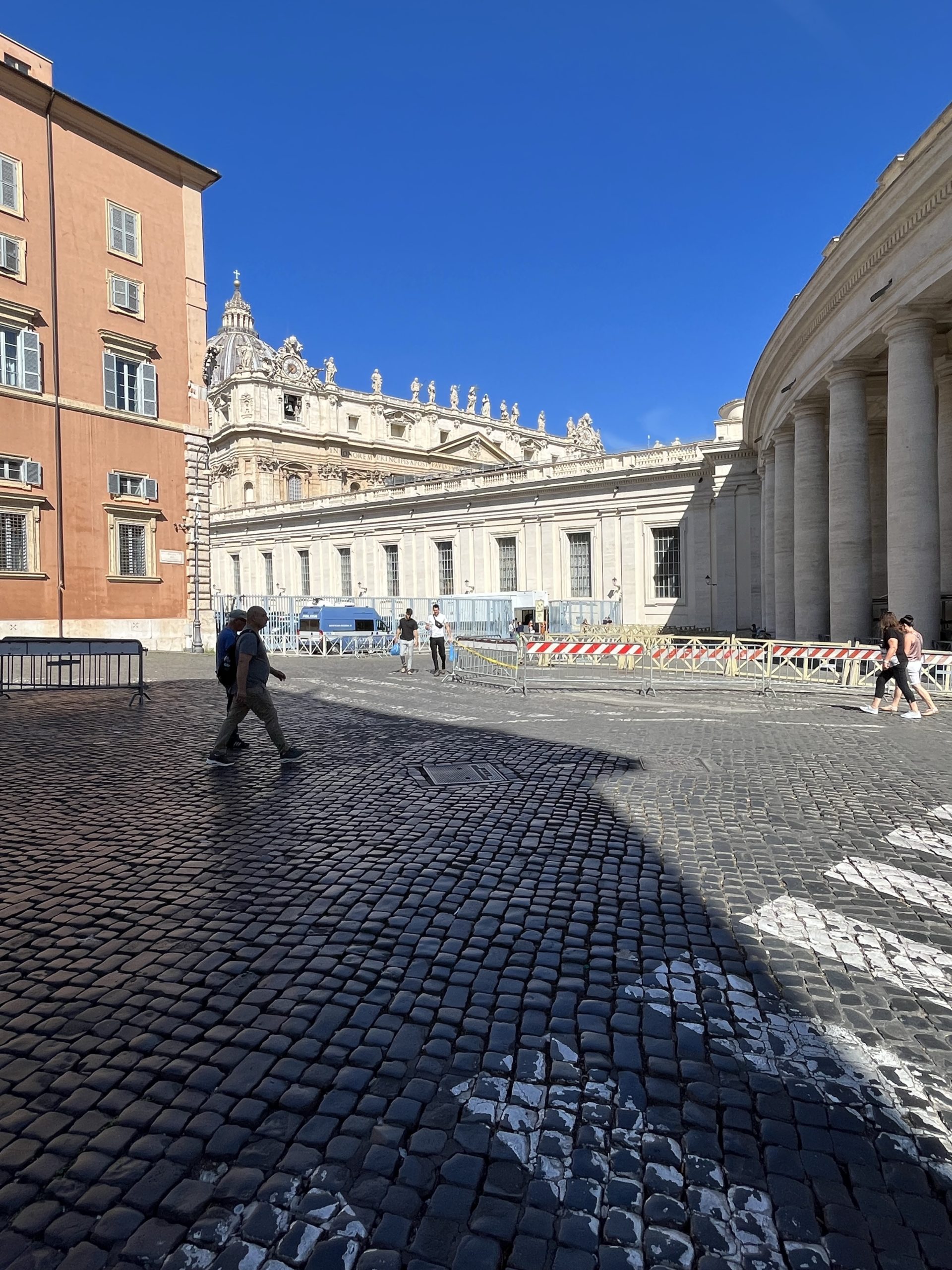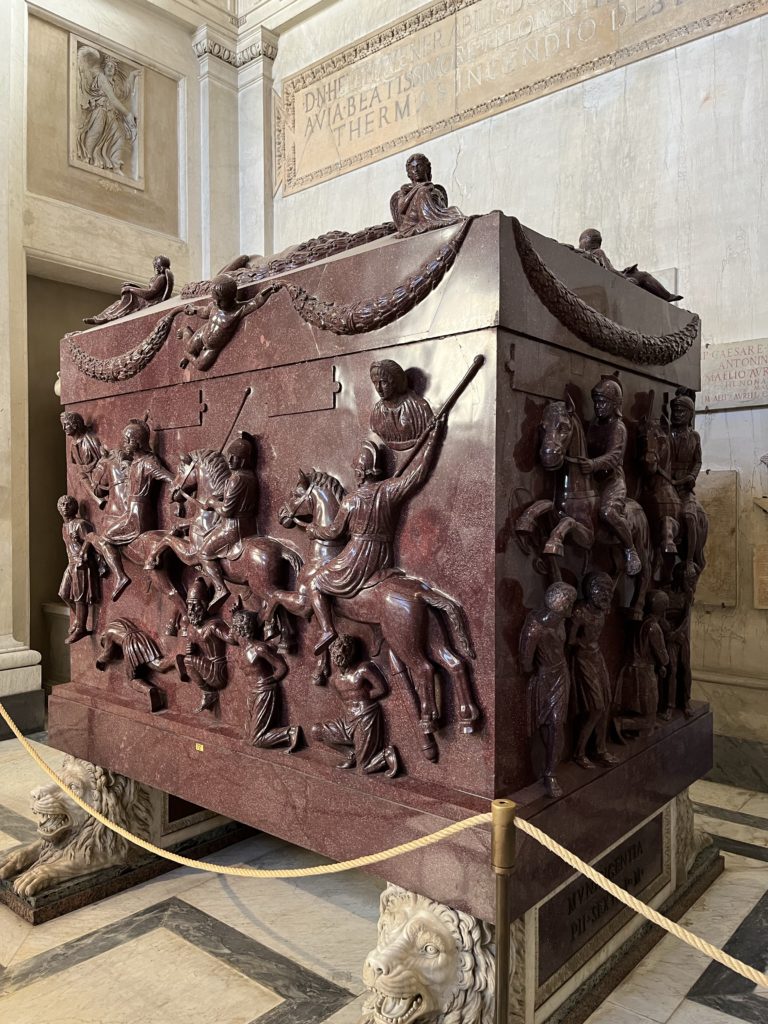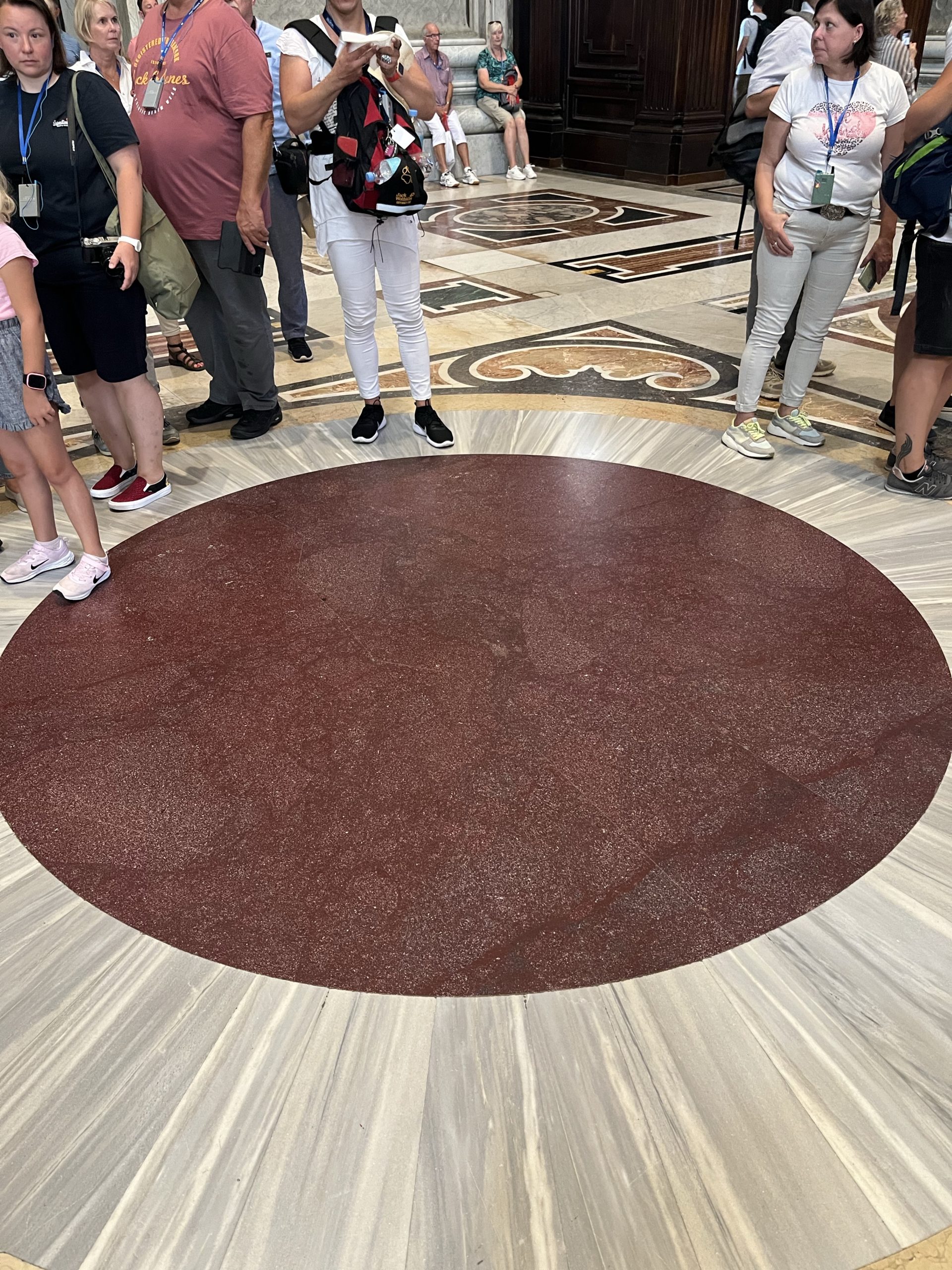
We only had half a day in Rome today before leaving for Florence, so I booked a private tour of the Vatican beginning at 7:30 A.M. The rest of the GSB team, whose anti-popery conspired with their love of slumber, decided to sleep in.
If you go to the Vatican, I highly recommend booking a private tour. It allows you to skip many of the long lines, and you can direct your guide to the things you are interested in. The Vatican is known for its art, and most Vatican tour guides are trained to talk mostly about the art.
With a private tour, you can stop your guide from talking about things you are not interested in and focus on your interests. Yesterday at the Forum, our guide started telling us about Romulus and Remus, and I stopped her and asked her how Rome was really founded. Tour guides are trained to tell you fairy tales and ghost stories.
So, today I told my guide today exactly what I was interested in and wanted to see. As I result, we didn’t spend a lot of time in the Sistine Chapel and we spent no time looking at the tapestries. Instead, we focused on the events and people relevant to this blog.

I had on the itinerary for our time in Rome a visit to the Mausoleum of St. Costanza (Constantine’s daughter). I had mentioned this from the first day in Rome and among the GSB team it had morphed into the “Mausoleum of George Costanza.” Unfortunately, it never fit our schedule. But today at the Vatican, we ran across the porphyry sarcophagi of St. Costanza and Constantine’s mother, Helena, in one of the hallways. If had not told my tour guide my interests at the beginning of the tour, we might have walked right by them.
We spent time in the Constantine Room, where Raphael had painted different scenes from Constantine’s life. There was Constantine and his army seeing the sign in the sky, the Battle of the Milvian bridge, and a recreation of the Donation of Constantine. However, the sign Raphael pained (a simple cross) is not what Constantine saw (he saw the Chi Ro), and the battle scene showed Maxentius’s army retreating over the Milvian Bridge, which didn’t happen (they retreated over a bridge of boats Maxentius had constructed, which then collapsed), and the Donation of Constantine never happened (it was shown in 1440 to be a forgery. We will allow Raphael to invoke artistic license and cut him some slack.
If you have never been to St. Peter’s Basilica, trust me when I tell you that you cannot appreciate how large it is by looking at pictures. It is awe-inspiring. Ironically, it is essentially a museum. I was thinking about how my church could put it to use by setting up some chairs, and a stage for the worship group, so people could corporately worship God here.
One thing I wanted to see and did was the porphyry disc in the entry of St. Peter’s Basilica on which the pope crowned Charlemagne Emperor of the Holy Roman Empire on Christmas Day in 800 A.D. It used to be in the original St. Peter’s Basilica Constantine built but was moved here when the the new St. Peter’s Basilica was built. People were walking over the disc today completely unaware they were on the spot where one of the greatest kingdom heroes once stood.

At my request, the tour guide took me below St. Peter’s Basilica to see the place where Peter’s bones are kept; it is very likely they are indeed his bones. She then showed me parts of what are left of the original St. Peter’s Basilica and now serves as the foundation for the new St. Peter’s.
We exited St. Peter’s and turned to the right, walking under the colonnade to the street that runs along the colonnade, and while my guide called a taxi for me, I found the likely spot where Peter was crucified. Tradition indicates Peter was crucified in Nero’s Circus, a hippodrome that ran beside where St. Peter’s now sits. There was an obelisk at the center of the hippodrome that day, and that obelisk has now been moved to the center of the plaza in front of St. Peter’s, a large memento to tie us all to an historical event Kingdom citizens will talk about forever.
At 11:15 a.m. I had met back up with the rest of the GSB crew, and we left on the three hour drive to Florence through the beautiful Tuscan countryside. As we rode along, I told Ann I had called ahead to the hotel in Florence and had them move her to the Savonarola Suite. I told her it was austere, with no furniture and only a slab of concrete for a bed, and that she would be required to place all her jewelry, books, and fancy clothes in the hall where they would burned in a bonfire. If you don’t get it, come back tomorrow and it will all make sense. GS
